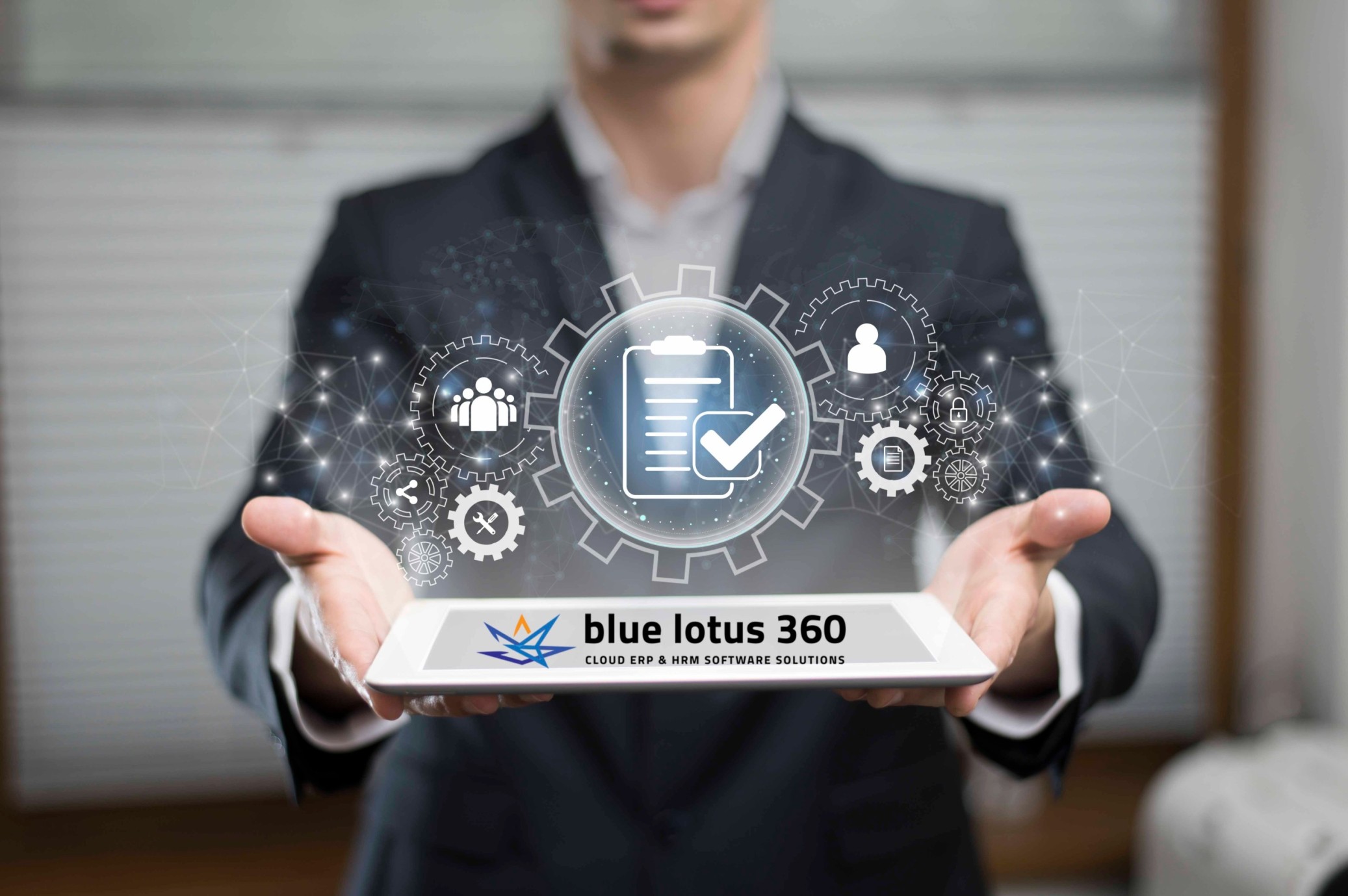TL;DR
SAP Business One (SAP B1) served SMEs well for years—but it’s on-premise, rigid, costly, and nearing end-of-life. Modern businesses now need agile, cloud-native solutions.
Key Differences:
– Deployment: SAP B1 = on-prem / hosted; Cloud ERP = native SaaS, browser-based.
– Upgrades: SAP B1 = manual; Cloud ERP = automatic.
– Integration: SAP B1 = limited; Cloud ERP = API-friendly.
– Scalability: SAP B1 = rigid; Cloud ERP = flexible & mobile-first.
– Cost: SAP B1 = license + maintenance; Cloud ERP = subscription-based.
Why switch:
– SAP B1 is outdated, complex, and expensive to maintain.
– Cloud ERPs deliver real-time data, remote access, faster deployment, and AI readiness.
– Businesses want growth without IT headaches.
Best Cloud Alternatives:
– Blue Lotus 360 – cost-effective, user-friendly, ERP built for SMEs.
– Acumatica – flexible licensing, open API, strong integrations.
– Microsoft Dynamics 365 BC – scalable, integrated with Microsoft tools.
Bottom line:
SAP B1 is reliable but aging. Cloud ERP solutions like Blue Lotus 360 offer agility, scalability, and lower costs—helping growing SMEs modernize and compete effectively.
Which Is the Better Fit for Your Growing Business?
For small and mid-sized businesses, the challenge is which route to take: stay with an old system such as SAP Business One (SAP B1) or migrate to a new true Cloud ERP. With their lack of experience, business owners, CFOS, and CTOS feel they are stuck with dated software or bombarded with too many options. The goal of this article is to help you make a wise decision by using the comparison of Cloud ERP solutions against SAP B1. If you are seeking growth, Blue Lotus 360 is a leader in cloud-based ERP and offers a fresh alternative.
Overview of SAP Business One (SAP B1)
SAP Business One (SAP B1) is an ERP application aimed at small and mid-sized businesses (SMEs), developed by SAP, one of the world’s largest and most recognized software companies. Since its launch in the early 2000s, SAP B1 has gained significant popularity by helping businesses automate core functions such as accounting, inventory, sales, and operations – all within a single platform.
Most companies use SAP B1 as an on-premises application, meaning it runs on their internal servers. While some vendors offer hosted versions, these fall short of being true cloud-native solutions, as the system is not fully web-based. This creates limitations in integrating with modern third-party applications, cloud-based tools, and emerging AI technologies.
Additionally, SAP B1 is nearing the end of its product lifecycle, with no major future updates planned, which raises concerns for long-term scalability and continued support.
Despite its strong reputation and reliability, SAP B1 is beginning to show its age, especially when compared to newer, true SaaS ERP platforms that offer native cloud architecture, flexible integration, and built-in AI readiness. It remains a solid option for businesses deeply tied to the SAP ecosystem or with highly specific industry needs, but it may not be the best fit for companies looking to modernize and scale efficiently.
What Is a True Cloud ERP/SaaS?
Just like any other software, Cloud ERP runs on the internet. Unlike traditional systems, it doesn’t require on-site hardware, VPNs as all information is stored on remote servers. Businesses get real-time data, scalability, and reduced IT costs, making it easier for them to grow.
Key features include:
- There is no need for any installation, as the ERP system can be accessed directly from any browser-enabled device.
- You will always be on the latest version, as the system automatically applies updates with new features and improvements.
- It integrates effortlessly with other platforms, including e-commerce systems, AI tools, and various third-party applications.
- The platform is built with a mobile-first design, making it easy and seamless to use on smartphones and tablets.
Modern True Cloud ERPS, like Blue Lotus 360, Acumatica and Microsoft Dynamics Business Central are built for the cloud from the ground up. They differ from legacy systems like SAP B1, which may only offer cloud hosting as an afterthought.
SAP B1 vs. Cloud ERP – Detailed Comparison
SAP B1 and Cloud ERP have different approaches to deployment, cost, and functionality. We have made a table so that you can understand everything at a glance. Have a look:
| Feature | SAP B1 | Cloud ERP |
| Deployment | Primarily on-premise or hosted and a very complex installation process. | Cloud-native, easy deployment |
| Cost Structure | Licensing + maintenance fees | Subscription (SaaS) |
| Customization | Available but complex | Flexible and scalable |
| Upgrades | Manual, IT-intensive | Automatic |
| Accessibility | Limited remote access | Access from anywhere |
| Integration | Requires additional tools | API-friendly & plug-and-play |
| Maintenance | Internal IT or vendor-supported | Vendor-managed |
| Implementation Time | Longer (weeks to months) | Faster (days to weeks, especially SaaS) |
| Native AI functions | No | Yes, can be integrated across modules |
| Manufactures support | Limited – product nearing end of life | Actively supported with continuous improvements |
SAP B1 is like a sturdy, older car – reliable but high-maintenance. Cloud ERP is like a new electric vehicle – sleek, efficient, and built for today’s roads.
Pros and Cons
SAP B1 Pros
- Trusted Brand
- Streamlined financial modules
- Industry-specific add-ons
SAP B1 Cons
- High upfront cost
- Complex Infrastructure
- Outdated UX
- Outdated technology
- Limited scalability for fast-growing businesses
Cloud ERP Pros
- Geo independence, real-time access
- Rapid deployment
- Eliminate the need for a large IT staff and in-house servers.
- Fulfil the need for easy business growth adaptation.
Cloud ERP Cons:
- Ongoing overhead costs: These expenditures can build up over time.
- Internet reliance: Needs a constant connection for data access.
Why Are More Businesses Moving Away from SAP B1?
An increasing number of small and medium-sized enterprises (SMEs) are moving away from SAP Business One (SAP B1) in favor of more modern, cloud-native ERP systems. The primary reason? Inflexibility. SAP B1 is known for its rigid structure, making it difficult to adapt to evolving business needs. Even simple changes, like adding a new product line or integrating third-party apps, can be unnecessarily complex and time-consuming.
Another major drawback is the high cost of maintaining on-premises infrastructure, which requires ongoing IT support for updates, troubleshooting, and backups. With limited innovation and minimal product advancement, SAP B1 is widely considered a stagnant solution in a fast-moving digital world.
While SAP has positioned “SAP Rise and Grow” as the successor to SAP B1, its extremely high cost and very low adoption rate in Asia have made it a less viable option for most growing businesses in the region.
In contrast, Cloud ERP solutions offer the flexibility and scalability that modern businesses demand. With real-time data access, automatic updates, lower total cost of ownership, and easier integration with AI tools and third-party systems, SaaS ERP platforms are quickly becoming the new standard.
As industries continue transitioning to SaaS-based ERP, companies need agile, future-ready platforms – not legacy systems that slow growth. If you’re looking for a more responsive, scalable, and cost-effective ERP alternative to SAP B1, now is the time to explore modern cloud ERP solutions.
Blue Lotus 360: A cost-effective SAP B1 Alternative
Blue Lotus 360 is a cloud-based ERP system. It is tailored for SMES in sectors of retail, manufacturing, and service industries. Unlike SAP B1, it’s designed to guarantee a flawless user experience and easy scalability.
The cloud-based ERP for SMEs ensure a smooth transition of critical data and operations so users of SAP B1 don’t have to worry about loss of information or going off-ERP. Our team supports you at every stage: designing, planning, and launching. . Check out our website to get more information about our ERP migration strategy. It can help you meet your business needs.
Acumatica Cloud ERP: A cost-effective SAP B1 Alternative
Acumatica is a true cloud ERP platform known for its flexible licensing model and strong integration capabilities. It supports a wide range of industries including distribution, manufacturing, and construction, and offers robust modules across finance, CRM, inventory, and project management. Its open API architecture enables seamless connection to third-party apps, while its role-based dashboards and modern UI enhance user experience. Acumatica is ideal for businesses seeking a scalable, fully cloud-native ERP with extensive customization options and a strong ecosystem of partners.
Microsoft Dynamics 365 Business Central: A Scalable SAP B1 Alternative
Microsoft Dynamics 365 Business Central is a comprehensive cloud ERP solution that integrates deeply with the Microsoft ecosystem, including Office 365, Teams, and Power BI. It offers a powerful accounting engine, streamlined operations management, and scalability for growing businesses. With its familiar interface and hybrid deployment options, it’s a popular choice for companies looking to modernize while maintaining flexibility. While it delivers strong functionality and seamless integration, it is considered a slightly more costly option, making it better suited for businesses that prioritize Microsoft alignment and are willing to invest in a long-term scalable solution.
Conclusion
SAP Business One is a reliable choice for businesses tied to the SAP ecosystem or with specific industry needs. However, its high costs, complex maintenance, and limited flexibility make it less ideal for fast-growing SMES. Cloud ERP, like Blue Lotus 360, Acumatica & Microsoft Dynamics 365 Business Central offer mobile first real-time access, quick setup, and scalability – perfect for companies looking to modernize.
When choosing an ERP, think beyond brand names. Consider your current needs and future goals. Are you scaling quickly? Do you need remote access to modern ERP solutions? Blue Lotus 360’s Cloud ERP could be the answer. Contact their consultants today for a free assessment and start your journey to a smarter ERP solution.













